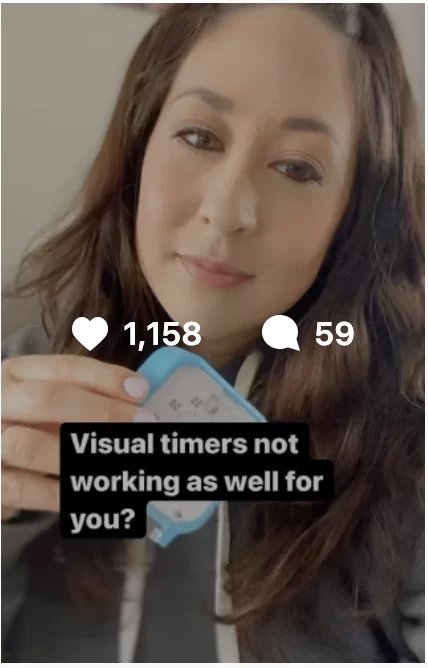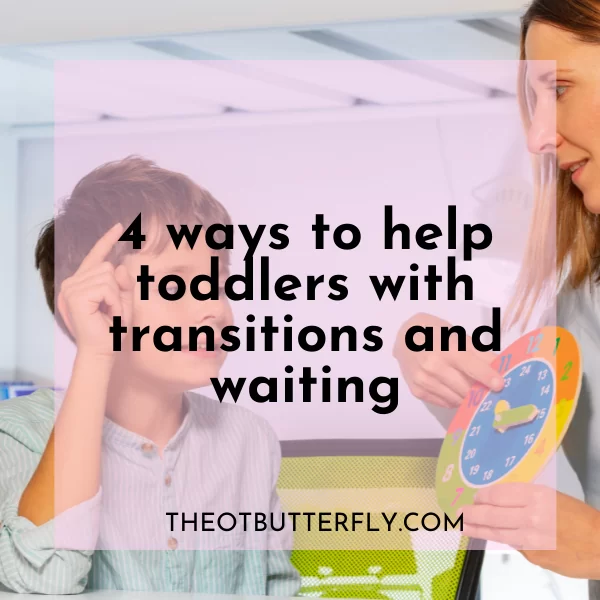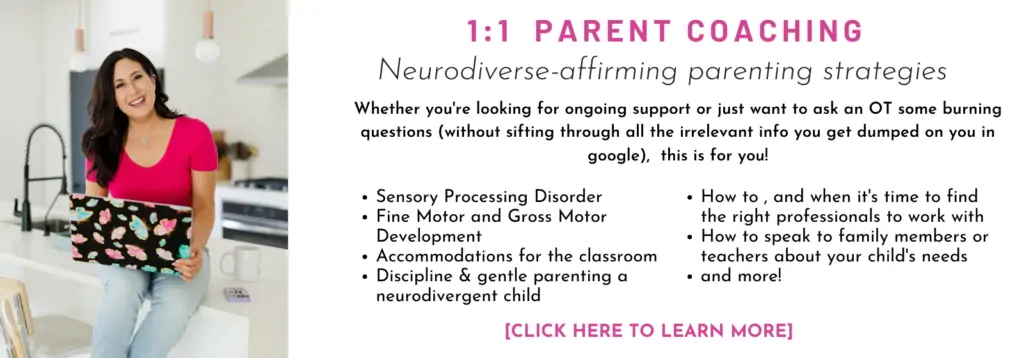Get your FREE sensory profiles cheat sheet >>click here<<
4 Ways to Help Toddlers with Transitions and Waiting
*this post contains affiliate links
Toddlers are the most patient, logical human beings on this planet. Said no one, ever.
My 2 year old is deep into her “If I can’t have what I want, when I want it, I will explode” phase. I say phase lightly, because it feels like this is a constant in our household.
She’s also in the, “I’m on my own schedule and I’d rather play water table than go inside for dinner” phase.
Despite this being biologically and developmentally appropriate for her age, I still needed to find tips and strategies to help us all function and stay sane during this “phase”. Here are some of the things I’ve done to help teach her about what waiting means, and how I help her cope when waiting or transitioning between activities is too hard.
Use a Visual Timer
I started using a visual timer to help her understand the concept of time. I said things like “when the red is all gone, it’s time to clean up.” I also used this timer for waiting for preferred activities, like “We’re going to sit at the table until the red is gone. When the red is all gone we can leave the table and play.”
Use Tangible, Structured End times
Instead of “We’re going to leave in 5 minutes”, mark the end of activities with objective, toddler measurable (i.e. not abstract increments of time) units. For example:
- 1 more song
- 3 more slides
- 3 more bubbles
- 1 more book

Learn to Love Commercials
We live in an age where any song/episode/story is at our finger tips, and if my 2 year old wants to listen to Moana for the 5th time in a row, all she has to do is ask google. At first, this was great- it helped us get through many melt downs by distracting her with some Disney tunes.
It wasn’t until we were driving in traffic, with no access to google, but only a radio with lots of commercials and other “non preferred” songs that I realized it was a problem.
So, I cancelled Premium music accounts so that she had to learn to live with commercials. I stopped fast forwarding through commercials on TV. We practiced using the word “wait” and explained what commercials are, and how radio stations sometimes play songs we don’t want to hear, and we have to wait.
Explain what’s coming next
I’ve been using this strategy with her since before she could speak, but this one comes into play a lot with transitions.
When I tell her the next few activities or tasks of the day, I quickly summarize by saying, “First ___, then ____”.
For example: “After breakfast, we’re going to the library. First eat. Then library”.
I use this for almost every little transition and task. It helps with sequencing and waiting. “First socks, then shoes.”
Do you have any tips or strategies that work for you and your toddler at home? Please share them with me! Connect with me on instagram @TheOTButterfly or share a comment below!








